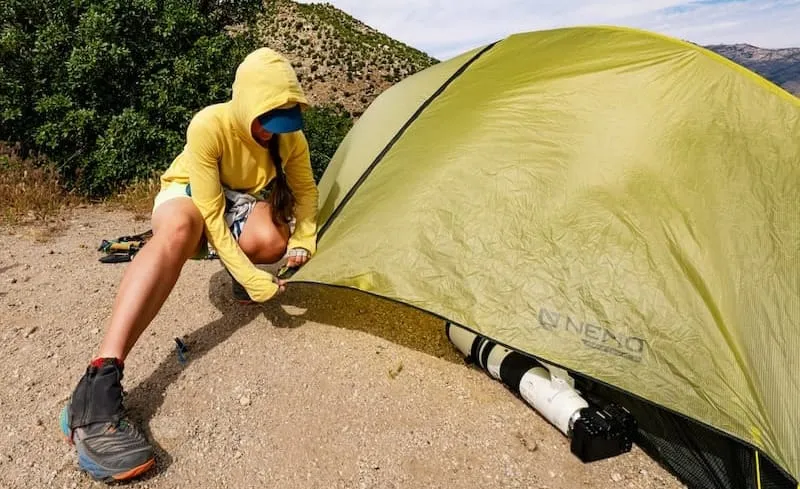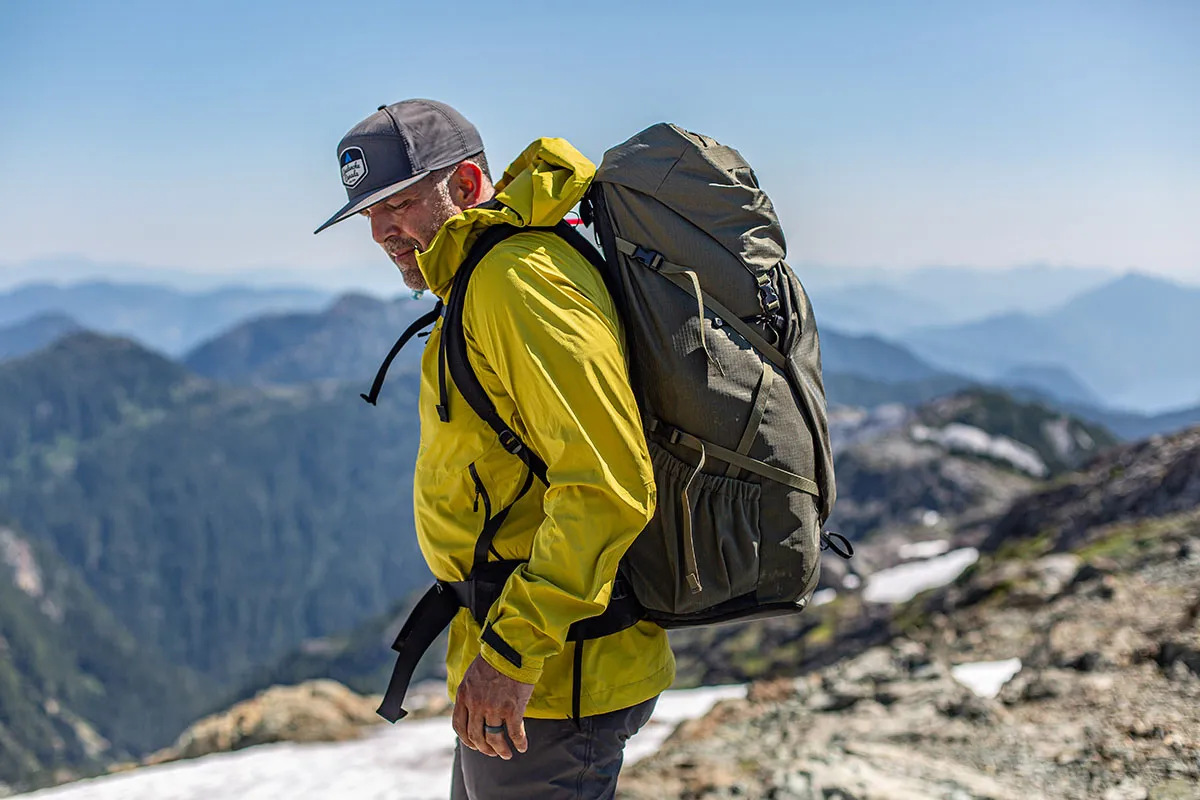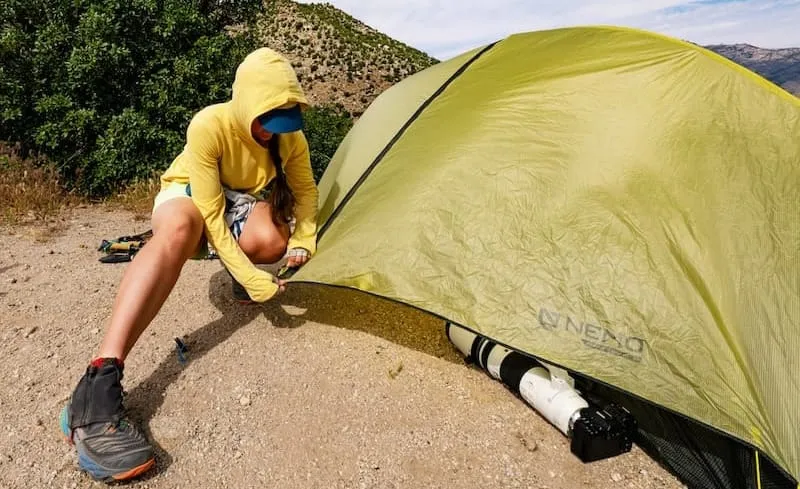After decades of outdoor adventures and testing everything from budget finds to premium gear, I've learned when splurging pays off and when it's just marketing hype. Whether you're a weekend warrior or planning epic expeditions, this comprehensive guide will help you make smart gear investments that enhance your outdoor experiences without breaking the bank. Discover the truth behind premium outdoor equipment and learn exactly where your money makes the biggest difference.
Understanding the Premium Gear Price Gap
The question "is expensive outdoor gear worth it" has been debated in hiking forums, gear reviews, and around countless campfires. After analyzing extensive community discussions and expert reviews, I've discovered the answer isn't as straightforward as many believe. The outdoor gear industry presents a fascinating paradox: while premium brands like Arc'teryx and Patagonia command prices that can exceed budget alternatives by 300-500%, the performance gap often doesn't match the price differential.

Through my decades of outdoor experience and conversations with gear manufacturers, I've learned that several factors drive these premium prices. Research and development costs, premium materials, ethical manufacturing practices, and yes, brand positioning all contribute to the final price tag. However, understanding when these factors translate to real-world benefits versus marketing hype is crucial for making smart gear investments.
The outdoor community's perspective, gathered from extensive forum discussions and gear reviews, reveals a nuanced truth: expensive outdoor gear can be worth it, but only in specific circumstances and for particular types of users. Weekend car campers have vastly different needs than thru-hikers attempting the Pacific Crest Trail, yet both groups often receive the same gear recommendations.
Key Insight
The real question isn't whether expensive outdoor gear is worth it universally, but rather when and for whom it provides genuine value beyond the premium price point.
Materials and Craftsmanship: What You're Really Paying For
When evaluating whether expensive outdoor gear is worth it, understanding material science becomes crucial. Premium gear often incorporates cutting-edge fabrics and construction techniques that genuinely enhance performance. Gore-Tex Pro, for instance, offers superior breathability and durability compared to basic waterproof coatings, but this improvement comes at a significant cost.
During my testing of various gear pieces, I've observed that premium materials often excel in three key areas: weight-to-performance ratio, durability under stress, and comfort during extended use. A high-quality down jacket using 850+ fill power down and lightweight shell fabrics can provide exceptional warmth while packing smaller than budget alternatives, making it invaluable for backpacking applications.
Construction Quality Differences
The craftsmanship aspect of premium gear often provides the most tangible benefits. Reinforced stress points, welded seams instead of stitched ones, and precision-engineered zippers contribute to gear longevity. I've personally witnessed budget backpacks fail catastrophically on multi-day trips, while premium packs endure years of abuse with minimal maintenance.
However, not all expensive gear justifies its price through superior construction. Some brands leverage their reputation to charge premium prices for gear that performs similarly to mid-range alternatives. This is where research becomes essential – reading detailed reviews from trusted testing sources can reveal which products genuinely deliver on their promises.
Reality Check
Materials matter most when pushing gear to its limits. For casual use, mid-range materials often provide 90% of the performance at 50% of the cost.
The Big Three: Where Premium Gear Makes the Biggest Impact
In the backpacking world, the "Big Three" – shelter, sleep system, and backpack – represent the most critical gear decisions. These items have the greatest impact on comfort, safety, and overall experience, making them prime candidates for premium investment. When considering if expensive outdoor gear is worth it, these categories deserve the most careful analysis.

Backpacks: Where Fit Trumps Features
Premium backpacks justify their cost through superior suspension systems, customizable fit options, and thoughtful design details. During my extensive testing, I've found that a well-fitted expensive pack can dramatically reduce fatigue and prevent injury compared to an ill-fitting budget alternative. The Osprey Atmos AG 65L Backpack exemplifies this principle with its adjustable Anti-Gravity suspension system.
Shelter Systems: Protection Worth Paying For
When it comes to shelter, premium gear often means the difference between a comfortable night's sleep and a miserable experience. High-end tents typically offer superior weather resistance, better ventilation design, and more durable materials. However, the benefits depend heavily on usage patterns. Car campers might find budget tents perfectly adequate, while alpinists require gear that can withstand extreme conditions.
I've personally tested numerous tent designs, from ultralight shelters costing over $600 to budget models under $100. The expensive options consistently outperform in challenging conditions, but for fair-weather camping, the difference becomes less pronounced. This highlights the importance of matching gear investment to intended use.
Sleep Systems: Comfort and Warmth
Quality sleep systems represent one of the clearest cases where expensive gear often proves worth the investment. Premium sleeping bags and pads use advanced insulation technologies and ergonomic designs that significantly enhance sleep quality. The Western Mountaineering VersaLite Sleeping Bag demonstrates how premium down and expert construction create superior warmth-to-weight ratios.
When Expensive Gear Is Actually Worth It
Determining when expensive outdoor gear is worth it requires honest assessment of your outdoor pursuits and priorities. Through years of guiding and outdoor education, I've identified specific scenarios where premium gear provides genuine value that justifies the increased cost.
Frequency and Intensity of Use
The cost-per-use calculation often favors expensive gear for frequent adventurers. If you're planning multiple multi-day trips annually, investing in premium gear can actually save money long-term while providing superior performance. I've calculated that my expensive down jacket, purchased eight years ago, costs less than $20 per year when factoring in its extensive use across hundreds of days outdoors.
Conversely, occasional users might never recoup the premium investment. A weekend camper who ventures out three times per year would need decades to justify premium gear costs through durability alone. For these users, focusing budget on essential safety items makes more sense than pursuing the latest high-end equipment.
Environmental Demands
Harsh environments reveal the true value of premium gear. Alpine climbing, winter camping, and expeditions to remote locations create scenarios where gear failure can have serious consequences. In these contexts, the reliability and performance margins of expensive gear often justify their cost through enhanced safety and success rates.
My experiences in extreme conditions have reinforced this principle repeatedly. Budget gear that performs adequately in controlled conditions often fails when stressed by temperature extremes, high winds, or sustained moisture exposure. Premium alternatives typically maintain performance across wider environmental ranges, providing crucial safety margins when conditions deteriorate.
Professional Insight
As a longtime outdoor professional, I've learned that expensive gear pays for itself when failure isn't an option. The question isn't whether you can afford premium gear, but whether you can afford for your gear to fail.
Weight and Packability Concerns
For backpackers and mountaineers, every ounce matters. Premium gear often achieves remarkable weight savings through advanced materials and engineering, making the higher cost worthwhile for weight-conscious adventurers. The difference between a 2-pound budget sleeping bag and a 1-pound premium alternative might seem minimal, but multiplied across all gear categories, it can mean the difference between a comfortable load and an punishing burden.
Ultralight enthusiasts often find that expensive gear provides the only viable path to their weight targets without compromising safety or comfort. Specialized ultralight manufacturers charge premium prices partly because their market is smaller and their engineering challenges more complex.
Smart Budget Alternatives That Don't Compromise Safety
While premium gear has its place, smart outdoor enthusiasts can often achieve 80% of the performance at 40% of the cost through careful selection. The key lies in understanding which features matter most for your specific applications and finding gear that excels in those areas while accepting compromises in less critical aspects.

Mid-Range Sweet Spot
Many outdoor brands offer mid-range options that provide excellent value propositions. These products typically use proven technologies and construction methods without the latest innovations or premium materials that drive up costs. The REI Co-op Trail 40 Backpack exemplifies this approach, offering solid construction and useful features at a fraction of premium pack costs.
When evaluating whether expensive outdoor gear is worth it for your situation, consider that mid-range alternatives often provide the best compromise between performance and value. These products typically undergo the same testing and quality control as premium lines but use slightly heavier or less exotic materials to reduce costs.
Previous Generation Premium Gear
One of my favorite strategies for accessing premium gear at budget prices involves purchasing previous-generation models. Outdoor brands frequently update their lines with minor improvements, causing retailers to clearance older versions at substantial discounts. These "outdated" products often perform identically to current models but lack the latest color schemes or minor feature updates.
Outlet stores, end-of-season sales, and specialized retailers often carry these discounted premium items. I've acquired several pieces of expensive gear at 40-60% discounts through patient shopping and willingness to accept non-current colors or models.
Used Gear Market
The used gear market offers another avenue for accessing premium equipment at budget prices. High-quality outdoor gear often maintains excellent functionality even after years of use, making secondhand purchases viable for budget-conscious adventurers. However, this approach requires careful inspection and knowledge of potential failure points to avoid purchasing gear nearing end-of-life.
Budget-Friendly Packs
REI Co-op Trail 40Affordable Sleeping Bags
Kelty Cosmic 20Expert-Tested Gear Recommendations
After decades of testing outdoor equipment across diverse conditions and budgets, I've developed a framework for making gear decisions that balances performance, value, and practicality. The following recommendations represent gear that has proven worthy of investment across different price points and use cases.
Premium Gear Worth the Investment
For serious adventurers who frequent challenging environments, certain premium gear pieces provide irreplaceable value. These items typically offer performance margins that can enhance safety and success rates in demanding conditions. When asking is expensive outdoor gear worth it, these categories consistently deliver affirmative answers for committed users.
Premium Shell Jackets
Arc'teryx Beta AR provides unmatched durability and weather protection for alpine environments.
Shop Arc'teryx Beta ARPremium Down Jackets
Patagonia Down Sweater offers exceptional warmth-to-weight ratio with ethical down sourcing.
Shop Patagonia DownBest Value Mid-Range Options
For most outdoor enthusiasts, mid-range gear provides the optimal balance of performance and value. These recommendations have proven themselves across thousands of user-days while maintaining accessible price points that don't require significant financial sacrifice.
I've personally tested each of these items across multiple seasons and conditions, often finding their performance rivals much more expensive alternatives. The key insight is understanding which premium features you actually need versus those that primarily serve marketing purposes.
Mid-Range Backpacks
REI Co-op models offer excellent value with proven reliability and comprehensive warranties.
View REI OptionsSleep Systems
The North Face offers reliable bags with good temperature ratings at accessible prices.
Browse TNF BagsBudget Shelters
REI Co-op tents provide solid protection with reasonable weights for most conditions.
Check Tent OptionsBuilding Your Kit Strategically
The most effective approach to gear acquisition involves strategic investment over time rather than attempting to purchase everything at once. I recommend starting with quality basics and upgrading specific items as your experience reveals their limitations or as your adventures become more demanding.
This approach allows you to learn which features matter most for your style of outdoor recreation while spreading costs across multiple seasons. More importantly, it prevents the common mistake of investing heavily in gear features you'll never actually use or appreciate.
Expert's Choice: Complete Outdoor Kit
Get our complete gear recommendations tested across hundreds of adventures
View Complete GuideConclusion
After extensive analysis of community experiences, expert testing, and personal adventure across diverse conditions, the question "is expensive outdoor gear worth it" reveals itself to be highly contextual. The answer depends on your adventure frequency, environmental demands, personal priorities, and financial situation rather than universal principles.
Premium gear consistently delivers superior performance margins that become crucial in challenging conditions or demanding applications. For frequent adventurers, serious mountaineers, and those pushing into remote or extreme environments, expensive gear often proves worth every dollar through enhanced safety, reliability, and performance. The cost-per-use calculation frequently favors premium equipment for dedicated outdoor enthusiasts.
However, casual users and beginners can achieve excellent outdoor experiences with carefully selected mid-range gear. The key lies in understanding which features provide genuine value for your specific applications versus those that primarily serve marketing purposes. Smart gear selection often involves mixing premium items where they matter most with budget alternatives where performance differences are minimal.
My decades of outdoor experience have taught me that the best gear is that which enables your adventures while fitting your budget and usage patterns. Whether that means investing in premium equipment or finding exceptional value in mid-range alternatives depends entirely on your individual circumstances and priorities.
Remember that expensive outdoor gear becomes worth it when it enhances your safety, comfort, or enjoyment in measurable ways. Focus your investment on items where premium performance translates to real-world benefits for your style of adventure. The wilderness doesn't care about brand names – it only cares that your gear works when you need it most.
Start Your Adventure Today
Discover more expert outdoor gear insights and adventure guides
Visit Nature Guests Shop Recommended Gear

